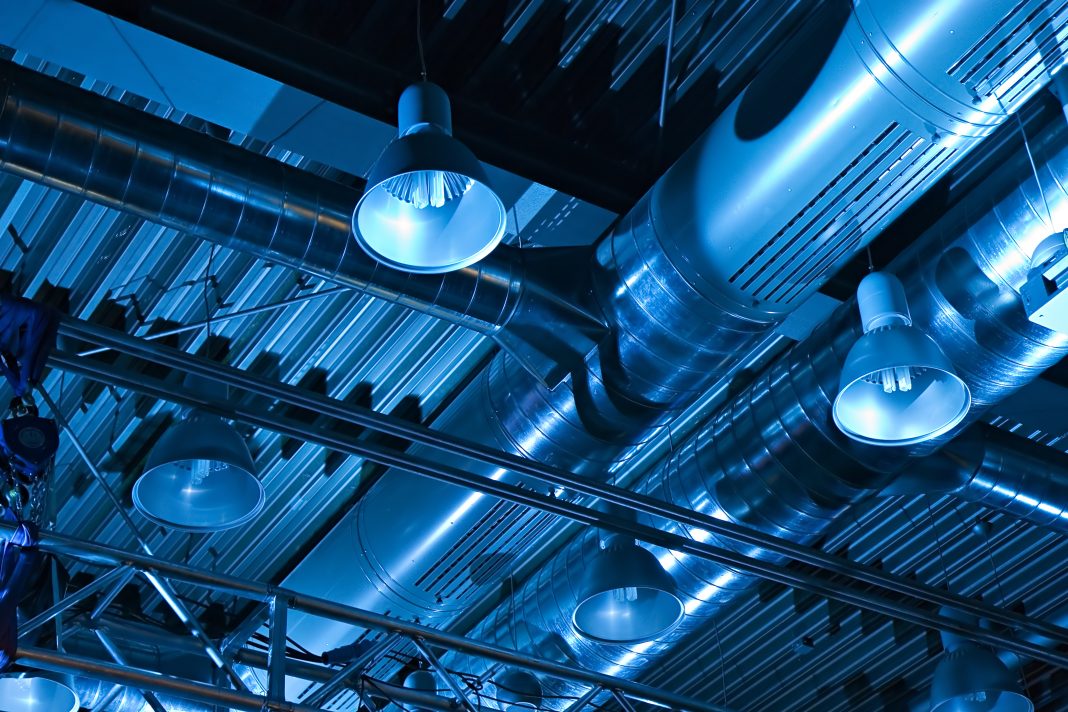From promises of air purifiers for schools to discussions around removing the lower halves of doors to improve air circulation, indoor air quality (IAQ) continues to be a hot topic. Erik Boyter, CEO of WindowMaster explains to PBC Today the importance of natural building ventilation to quality of life
Recent updates to the Approved Document F of the Building Regulations emphasise a consistent flow of fresh, outdoor air complemented by robust monitoring of IAQ. It’s now widely understood and accepted that air quality and natural building ventilation has a positive impact on learning, productivity and well-being, and mitigate against issues such as headache, dizziness and nausea.
Building occupants aren’t the only ones who stand to benefit. It’s now a widely accepted fact that lighting, heating and cooling operating emissions account for a significant proportion (28%) of all carbon emissions emitted by building and construction (which is 39%). Given this, HVAC seems a good focus area to make good progress in the race to decarbonise.
Passive ventilation is one piece of a much larger green construction puzzle, which should be considered in tandem with other modern, eco-friendly design and building techniques, such as low-energy lighting and material-based approaches including ‘fabric first’.
Smart-controlled passive ventilation can enhance material-based thermal performance, working with a structure’s thermal mass for efficient and effective cooling throughout the day.
Fortunately, there are intelligent, natural ventilation solutions available for specifiers and building managers to improve IAQ and help decarbonise, whether in a new build or refurbishment. More sophisticated than plugging in an air purifier, these systems can connect to building management systems (BMS) for precise monitoring and accurate control.
Importantly, ventilation strategies must be approached on a bespoke basis, identifying the best technology and plan for individual spaces and requirements.
Below outlines important considerations for anyone seeking to help people breathe easier and healthier.
While we recommend consulting built-environment and ventilation specialists to help optimise your building’s ability to accommodate as much natural airflow as possible, there are a few key elements to be aware of from the outset.
Natural building ventilation comprises both manual and automatic windows and each has its benefits and disadvantages. One may be more appropriate depending on the building, its spaces, usage and occupants.
The physical layout of your building presents a different range of approaches to consider: single-sided or cross ventilation for smaller buildings, single-zone stack, multizone atrium drive ventilation or multizone solar chimney for larger ones.
Automating windows enables building managers to use control strategies to help achieve optimum performance and air quality, virtually unachievable with the manual only operation.
The three essential ventilation strategies:
-
Purge ventilation
Opening windows before occupants arrive allows you to flush out stale air and prepare spaces without the risk of discomfort.
2. Preemptive ventilation
Carefully controlling ventilation in response to sensor readings before room conditions begin to fail, taking prevailing weather conditions and ventilation requirements into consideration.
3. Night cooling
Optimising comfort in the summer by releasing excess heat through windows.
How technology can support ventilation
Appropriate, supporting technology is the linchpin of a quiet, intuitive and cost-effective natural ventilation strategy. Don’t be tempted by the potential savings of using a restrictive low-tech system when there are ample sophisticated smart options available, and not necessarily at a much greater cost.
A system comprising lower quality actuators is likely to function at a fixed speed and operate noisily. The windows open once room conditions have failed, opening quickly to bring in lots of fresh air at once before closing again. This can cause unstable and uncomfortable conditions as well as reduce actuator life. The optimum solution is to seek to achieve the ideal balance between ventilation supply and demand, opening in smaller increments to adjust and hit the right air quality-comfort-energy mix for as much time as possible.
An identical design, using the best technology, enable your windows and BMS to communicate with one another. In this situation, the BMS can tell the windows to open quietly to specific positions for background automation while minimising disruption, and more quickly if it’s raining or as an emergency function.
Using appropriate technology, you can use feedback from sensors and the BMS to help optimise set points for temperature and air quality based on what occupants find most comfortable. This is key: if you can’t monitor it, you can’t manage it.
The Manchester Engineering Campus Development
Completed in spring 2021, the Manchester Engineering Campus Development (MECD) aspires to provide world-class sustainable research and learning facilities. Situated on the outskirts of Manchester City Centre, intelligent natural ventilation is used across four buildings, to ensure great air quality while reducing energy consumption compared with other ventilation approaches.
Many teaching spaces and large open plan areas are split into zones, and banks of windows are carefully controlled using the BMS in conjunction with special communication technology to offer quiet, accurate control of the windows. This technology allows the BMS not only to power windows but to talk to them and gain feedback. This makes the automation aligned to occupant and energy needs, and complementary to the building’s aspirations.
It seems only fitting that one of the largest state-of-the-art education buildings in Western Europe should use this innovative approach to help deliver its BREEAM excellent rating, as well as great learning spaces for the future engineers that will continue to help find other solutions to address climate change.
Natural ventilation can support net zero
As the UK sets its sights on net zero 2050, focusing on energy-efficient new buildings isn’t enough to pass the finish line. Design and construction need to give consideration to the UK’s ample existing building stock, frequently performing poorly and contributing significantly to operating emissions.
Fortunately, recent projects demonstrate energy efficiency and retrofit needn’t be mutually exclusive. Along with providing the opportunity to contribute to a healthier environment, refurbs focused on reducing emissions also set the foundations for happier building occupants.
There’s no need to hold your breath for an effective ventilation solution. There are myriad already available. Equipped with a good understanding of a natural approach to improving IAQ, you’re ready to explore your options, with the help of a ventilation specialist.
Erik Boyter
CEO

WindowMaster
LinkedIn: Windowmaster

















